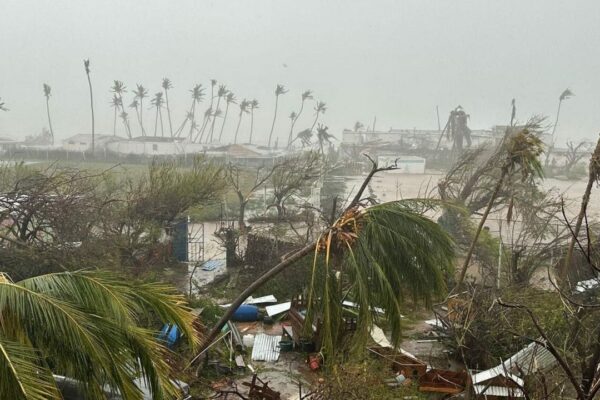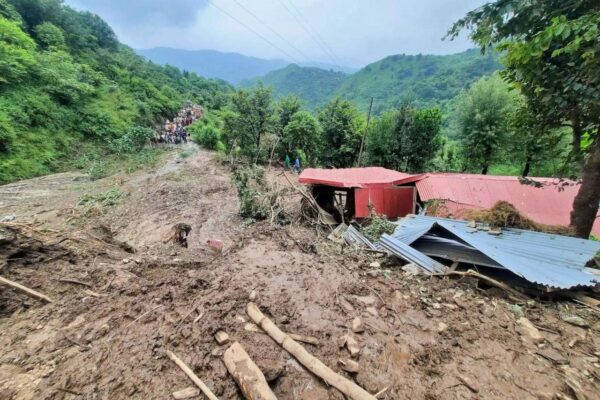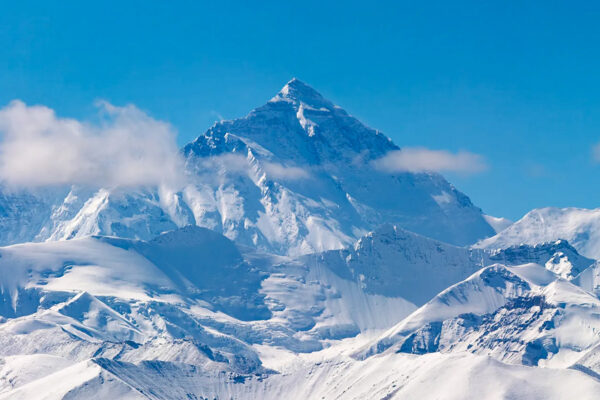15 Years Hence, 2004 Indian Ocean Tsunami Still Haunts Us!
On the 15th anniversary of one of the world’s most deadly disasters, communities across Asia commemorated the victims of the Indian Ocean tsunami. Today, many of the communities have recovered, though painful memories and some ruined structures remain in place. Across Asia today, memorials were held in remembrance of the thousands of victims of the 2004 Indian Ocean earthquake and the devastating Tsunami.
The 2004 Indian Ocean tsunami killed at least 225,000 people across a dozen countries, with Indonesia, Sri Lanka, India, Maldives, and Thailand sustaining massive damage. Indonesian officials estimated that the death toll in the country alone ultimately exceeded 200,000, particularly in northern Sumatra’s Aceh province.
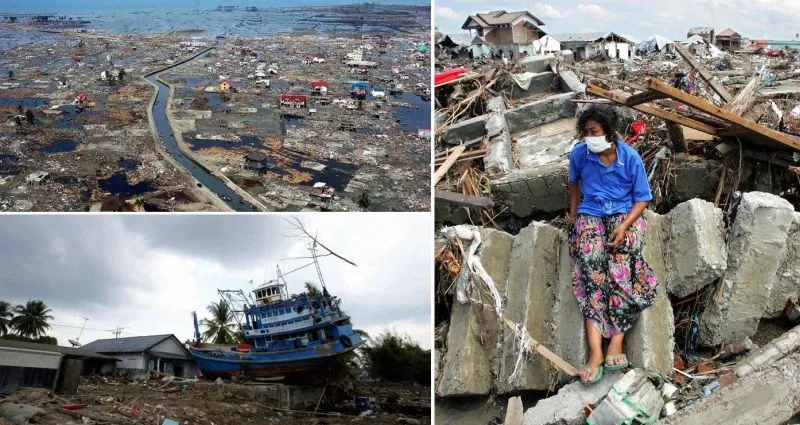
Tens of thousands were reported dead or missing in Sri Lanka and India, a large number of them from the Indian Andaman and Nicobar Islands territory. The low-lying island country of Maldives reported more than a hundred casualties. Several thousand non-Asian tourists travelling in the region were reported dead or missing, as well.
The lack of food, clean water and medical treatment, combined with the big task faced by relief workers trying to get supplies into some remote areas where roads had been destroyed or where civil war raged, extended the list of casualties. Long-term environmental damage was severe as well, with villages, tourist resorts, farmland, and fishing grounds demolished or inundated with debris, bodies, and plant-killing salt water.
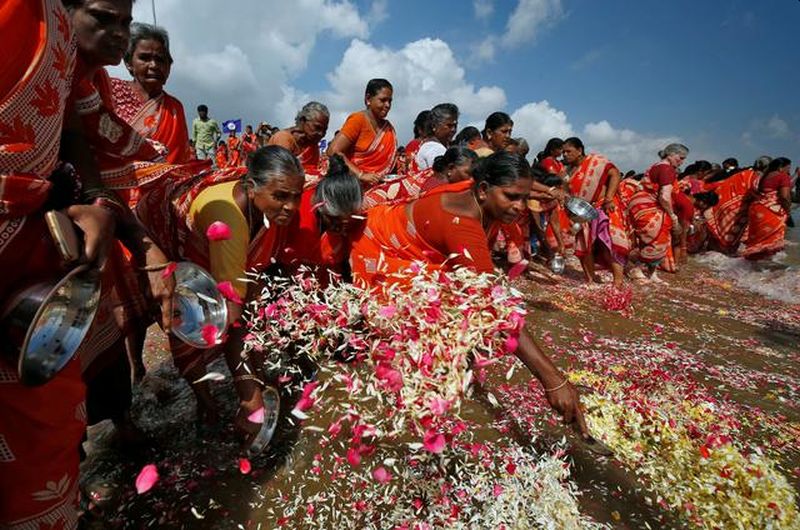
Women scattering flower petals in the waters of the Bay of Bengal during a prayer ceremony for the victims of the 2004 tsunami / Image: Reuters
Memorials Commemorating the Victims
15 years after the 2004 Indian Ocean Tsunami, memorials were scheduled in the Indonesian province of Aceh, where entire villages were flattened and more than 125,000 people perished in the giant waves. Since then, the area has been largely rebuilt, with some 25,600 residential, commercial, government and school buildings constructed inside a high-risk zone that had suffered virtually total devastation in 2004.
In 2004, a devastating #Tsunami claimed the lives of children and adults.
For those whose lives had changed forever, giving them a future to believe in was our biggest priority.#70withYou pic.twitter.com/MrgyXOUCZ0
— UNICEF India (@UNICEFIndia) December 26, 2019
In Thailand, where more than 5,300 people were killed, including tourists visiting resort islands in the Andaman Sea, officials held a memorial ceremony and called for more awareness and preparedness for disasters.
Black day for India – December 26: The 2004 Tsunami that wiped away millions of people
Read More – https://t.co/OxPbNvTmRc#TSUNAMI #Sumatra pic.twitter.com/UHQJVkuEOw
— IBTimes India (@ibtimes_india) December 26, 2019
In India, where more than 10,000 people died in the tsunami, survivors also were to hold memorial ceremonies. More than 35,000 people died in Sri Lanka. An interfaith service for Muslim, Christian and Buddhist victims was also scheduled.
15 Years Ago, #OnThisDay Boxing Day Tsunami ? hit Sri Lanka ??. Over 35,000 lost. Today is #SriLanka‘s National Safety Day.
2 Minutes Silence for all victims ?
Remembering 2004 Tsunami victims ?#LKA #Tsunami2004 #OnThisDaySriLankapic.twitter.com/igkhcVW1Z8— Sri Lanka Tweet ?? (@SriLankaTweet) December 26, 2019
Even after 15 years, families of the victims still shudder on the memory of the disaster. They have been worshiping the sea on December 26 every year since. Anointed with flowers, milk, and pleading for the sea to be at peace with humanity forever.
Indian Ocean Tsunami in 2004
It was the morning of December 26, 2004, when an earthquake of a magnitude-9.2 disrupted the ocean floor off Indonesia, sending the most devastating tsunami with waves as high as 17.4 meters (57ft.) across the Indian Ocean. More than 230,000 people were killed in 13 countries, a million others were uprooted and entire coastlines across the Indian Ocean were destroyed.
Witnesses in the Indonesian city of Banda Aceh, reported five to six minutes of violent shaking and a few collapsed buildings during the main quake (the aftershocks caused more damage with subsequent, repeated shaking). It was the only city to report damage directly from the earthquake; most of the day’s damage would come from the tsunami waves generated by the quake.
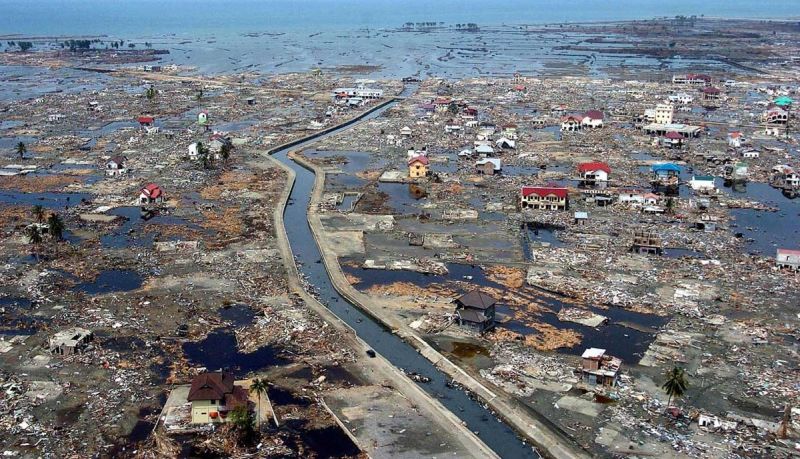
Devastated district of Banda Aceh, Sumatra / Image: The Atlantic
The hypocenter of the earthquake was 10 kilometers below the surface and about 250 kilometers offshore of Sumatra, with a registered magnitude of 9.1-9.3 on the Richter scale. The earthquake was caused by the collision between the Burma Plate and the Indian Plate in the seabed. The US Geological Survey concluded that the tsunami generated 23,000 times more energy than the US’s atomic bomb on Hiroshima.
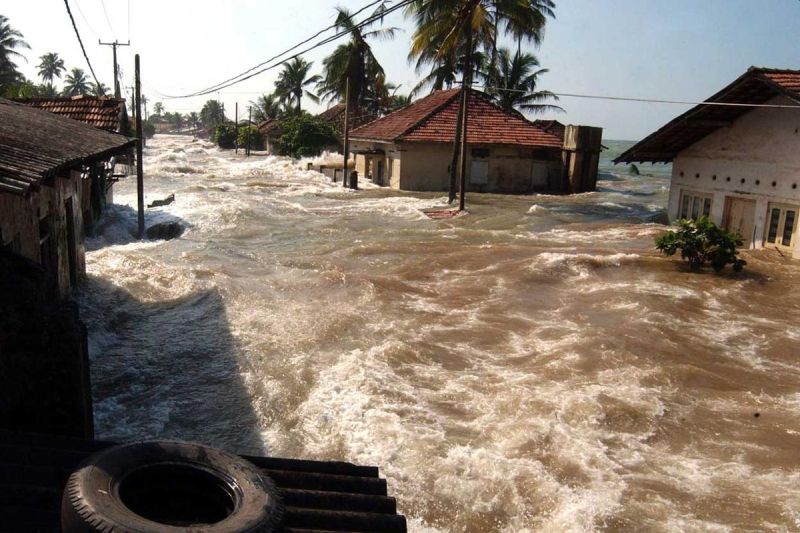
Tidal waves wash through the houses in Maddampegama, Sri Lanka / Image: The Atlantic
The Aftermath
The 2004 Sumatra-Andaman quake burst hundreds of kilometers along the Sunda trench with a maximum displacement of 20 meters. The initial earthquake was the longest ever recorded, lasting between 8 and 10 minutes, and created the biggest gash in the Earth’s seabed ever observed – nearly 800 miles.
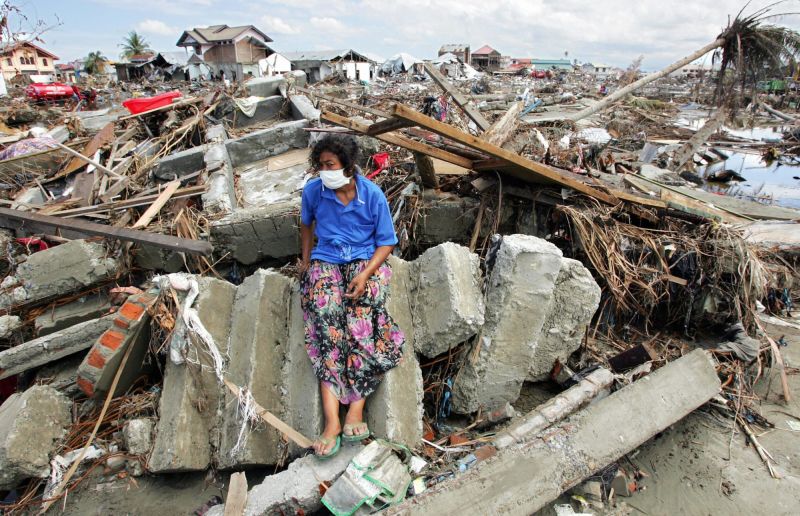
Banda Aceh after a month of tsunami / Image: History
Due to the distances traveled by the displaced water, the tsunami hit land anywhere between 15 minutes and seven hours after the earthquake. Parts of South Africa, over 5,000 miles away, suffered a 5 ft. high tide some 16 hours later.
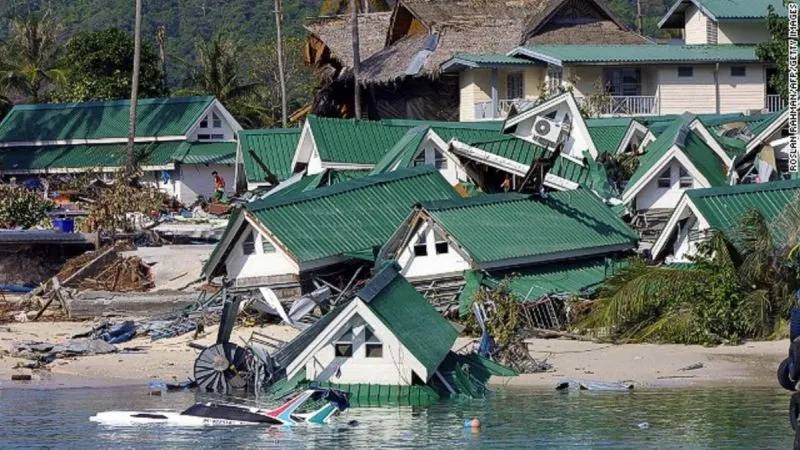
Destroyed houses in Krabi, Thailand / Image: CNN
The UN initially feared that the death toll could double due to the lack of food and clean water and the spread of disease in the wake of the tsunami. But, a massive international campaign for humanitarian aid began in the immediate aftermath.
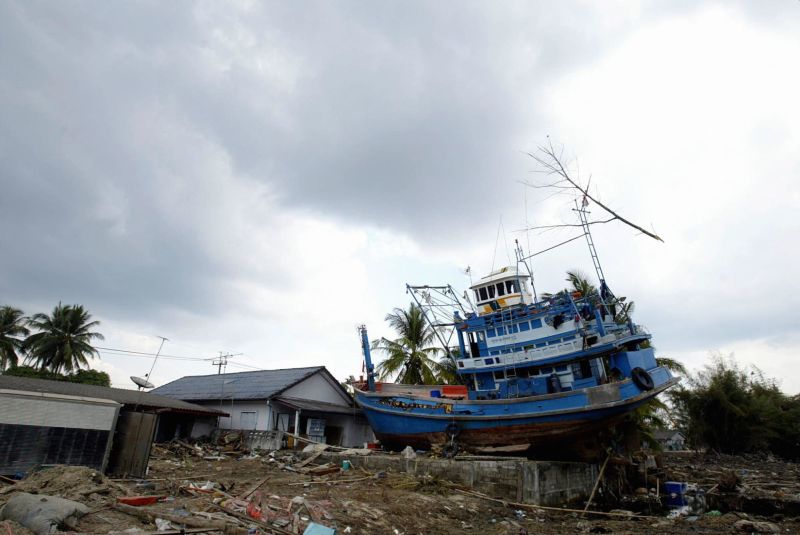
A boat crashed over the house in Thailand / Image: History
Six months after the disaster about £7 billion had been pledged from around the world, with UK citizens donating roughly £330 million – a much larger figure than the British government.
Tsunamis being relatively infrequent in the Indian Ocean, no warning system was in place at the time. By June 2006, the Indian Tsunami Warning System – 25 seismographic stations relaying information to 26 national tsunami centers – was made operational.
Despite this, the effects of the 2004 Indian Ocean tsunami continue to be felt. While local economies are on the road to recovery, the environmental damage and the emotional impact on those who survived will remain harder to quantify.
